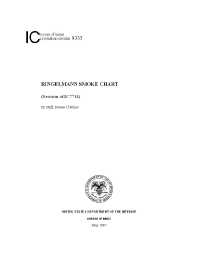Mining Publication: Ringelmann Smoke Chart
Original creation date: May 1967
The Ringelmann Smoke Chart fulfills an important need in smoke abatement work and in certain problems in the combustion of fuels. A knowledge of its history and method of preparation is, therefore, of interest to many. Since instructions on its use are not shown on the recent edition of the chart, those included in this revision of the previous Bureau of Mines publication now are a necessary complement to the chart. More detail regarding the use of the chart is included than was given in the earlier version. The Ringelmann Chart is used as a device for determining whether emissions of smoke are within limits or standards of permissibility (statutes and ordinances) established and expressed with reference to the chart. It is widely used by law enforcement or compliance officers in jurisdictions that have adopted standards based upon the chart.
Authors: Bureau of Mines
Information Circular - May 1967
NIOSHTIC2 Number: 20027925
U.S. Department of the Interior, Bureau of Mines, Information Circular 8333, 1967 May:1-12
See Also
- CFD Analysis of Mine Fire Smoke Spread and Reverse Flow Conditions
- Diesel Exhaust Aerosol, Review of Measurement Technology
- Emerging Technologies: Aiding Responders in Mine Emergencies and During the Escape From Smoke-Filled Passageways
- Experimental and Modeling Investigation of the Effect of Ventilation on Smoke Rollback in a Mine Entry
- Instrumentation for Diesel Particulate Matter Emissions Research
- Morphological and Elemental Classification of Freshly Emitted Soot Particles and Atmospheric Ultrafine Particles using the TEM/EDS
- Role of Lubrication Oil in Particulate Emissions from a Hydrogen-Powered Internal Combustion Engine
- Sampling Results of the Improved SKC® Diesel Particulate Matter Cassette
- Smoke Reversal Interaction with Diagonal Airway - Its Elusive Character
- Smoke, Carbon Monoxide, and Hydrogen Chloride Production from the Pyrolysis of Conveyor Belting and Brattice Cloth
- Content source: National Institute for Occupational Safety and Health, Mining Program


 ShareCompartir
ShareCompartir
